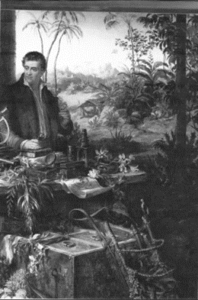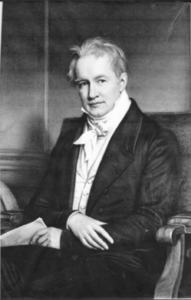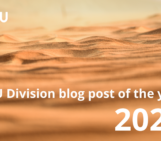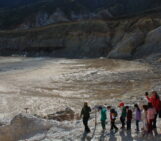
Sean Daly is a (now retired) Canadian mining geologist with 40+ years of experience, who has dedicated his career to understanding the close relationship between mining, geology and society. His recent book “From the Erzgebirge to Potosi: A History of Geology and Mining Since the 1500’s” traces the history of mining and geology from the 1500’s including the Renaissance, the Industrial Revolution and modern times. The book spans his learnings and discoveries from the valuable silver mines of the Erzgebirge Mts of eastern Germany to the rich silver mines of Bolivia, including Potosi.
Read on for an excerpt from his book:
ALEXANDER VON HUMBOLDT
Alexander was born on September 14, 1769, in the Berlin of Frederick the Great. He was a scientist, explorer, political liberal who supported some revolutionary movements, and the last great universal man. To him the whole world was integrated and his field of study was very wide-ranging, from rocks and minerals to mines evaluation to the geographical and altitudinal changes in vegetation, to the earth’s magnetic field to the economic potential of mining districts, and to the condition of the miners and their need for better safety equipment and geological training, all this and much more was his wide-ranging field of study. He began his university education with his brother, Wilhelm, at Frankfurt an der Oder. The two only stayed there 6 months, then Alexander went home and shortly developed an interest in botany, sparked by the knowledge of Karl Ludwig Willdenow, a botanist of the time. His brother went to the University of Gottingen. By that time, he had already worked out some guidelines for life such as “Hard work and the quiet pursuit of natural history will preserve me from the temptations of life”. Within one year at that university, he already had a solid foundation in physics and chemistry. At Gottingen, he met Georg Forster. who in the end had the greatest single influence on his life. Forster was an explorer, naturalist, geographer, linguist and famous author- all things that Alexander greatly admired and also the breath of Forster’s learning.
Alexander joined Forster in a trip to England and it was an eye-opener for the young Alexander. They travelled down the Rhine to Holland and Belgium and with Forster for a guide, nothing escaped observation- art and nature, past and present, the living and the dead, politics and economics, factories and docks, and parks and observatories. In London, Alexander heard Burke, Pitt and Sheridan speak in Parliament, met Cavendish, Wiliiam Herschel, John Sibthorp and Sir Joseph Banks (Captain Cook’s companion on his first journey around the world). On their return, they passed through revolutionary Paris and “the atmosphere after a year of political liberty, was fantastic, and the enthusiasm of the people and their sense of unity and purpose had a lasting impact on both of them”.
With Forster, Alexander first set eyes on the ocean and developed his passion to travel the world and study its features. In approximately 1791, Alexander entered the Mining Academy at Freiberg in Saxony (close to where Agricola had done his mining studies) under the tutelage of Abraham Gottlob Werner (the famous professor). In just 8 months, he had learned the business of geology and mining. In a letter from the Dept. of Mines, it stated that ‘on account of his valuable knowledge, both theoretical and practical, possessed by him in mathematics, physics, natural history, chemistry, technology, the arts of mining and smelting, and the general routine of business’, he was to be appointed Assistant Inspector in the Dept of Mines. This was the beginning of his professional life.
The Mining Dept.’s jurisdiction covered an immense area from Franconia in the south to the Baltic coast in the north and Prussia’s Polish possessions in the east. This large area included stone quarries, peat and soft coal in Brandenburg, hard coal and iron in Silesia, salt mines by the sea and copper and gold in the Fichtel mountains. Thus, this wide range of earth materials afforded Humboldt with an unparalleled unique opportunity for travel and natural scientific field work, which helped to fulfill his need for both. From this author’s personal experience working not at widely diverse types of mines so much, but concentrated 19 years at one mine, and with over 40 years at both mines and in exploration, some of which was in prospects as diverse as coal, diamonds, gold and copper, it resulted in an ability to evaluate geological and mining phenomena quickly and determine the essential features to be concentrated on in any new mineral properties encountered in other parts of the world. As for Humboldt, in two months he had visited many of these mines and submitted his 150 page report on his comprehensive observations. A day or two after submitting his report, Alexander was promoted to Chief Inspector of Mines and he was overjoyed by his new role. He was instrumental in the re-development of the mines in the Fichtel mountains. He discovered where the gold seams were located by careful examination of old mining records.
To show where his sympathies lay, he developed a school all on his own for the poor miners in Steben, in the Fichtel Mts including geology, underground water, mining law, etc and it became very popular with classes often going late into the night. He also designed various breathing apparatuses for the miners to improve their safety. Later, once he began his travels in South America he again showed his human social conscience by being appalled by slavery and denouncing it at every possible moment. In 1794, though offered a desk job still in the Mining Dept. at a high salary, Alexander gave it all up to pursue his apparently wild dreams of travel in southern tropical climes, much to the benefit of all of mankind. At this time, Alexander developed a strong friendship with Goethe, a famous German poet but also knowledgeable in geology ie the mineral goethite is named after him (goethite is an iron-bearing hydroxide mineral). Goethe said of Alexander, “he is a true cornu-copiae of natural science” and further, “his company is very stimulating and interesting indeed. You couldn’t learn as much in books in a week as he teaches you in an hour”.

Aime Bonpland in the hut shared with Humboldt in the forests of the Orinoco. Painting by E. Ender. Figure32
Sean’s book explores the powerful tools of both miners and geologists, explaining in detail the dialectical and historical materialism in their relation to the earth’s processes, the mining cycle and social redress. The environmental movement and the struggle of the miners for better working conditions and a more humane social system are discussed as is the comparison between the equitable Inca mit’a labour system and the corrupted mit’a of the Conquistadores. Richly illustrated, with 74 figures and images of the famous scientists, maps and photographs to explain technical points make it a valuable and informative read.
You can read more about Sean Daly on his website and discover his book here.





